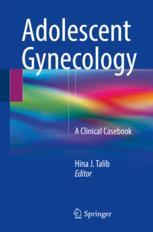

Most ebook files are in PDF format, so you can easily read them using various software such as Foxit Reader or directly on the Google Chrome browser.
Some ebook files are released by publishers in other formats such as .awz, .mobi, .epub, .fb2, etc. You may need to install specific software to read these formats on mobile/PC, such as Calibre.
Please read the tutorial at this link. https://ebooknice.com/page/post?id=faq
We offer FREE conversion to the popular formats you request; however, this may take some time. Therefore, right after payment, please email us, and we will try to provide the service as quickly as possible.
For some exceptional file formats or broken links (if any), please refrain from opening any disputes. Instead, email us first, and we will try to assist within a maximum of 6 hours.
EbookNice Team

Status:
Available4.5
41 reviewsThis book offers a comprehensive and clinically relevant survey of adolescent gynecology. Adolescent Gynecology: A Clinical Casebook addresses the many intersecting considerations of gynecologic and reproductive health care for this population using a concise, case-based format.
Organized in four sections, the first introduces chapters on adolescent confidentiality, puberty, and well care. Section II covers varied menstrual disorders, while Section III highlights issues in reproductive health care including sexually transmitted infection and adolescent pregnancy. Finally, Section IV addresses special populations of adolescents, including chapters on girls who have sex with girls, girls who are victims of abuse and girls with special health care needs and chronic health conditions. In each section common gynecologic health issues are discussed in the context of these clinical cases, provide the knowledge needed to further improve comprehensive care of adolescent patients.
Adolescent Gynecology: A Clinical Casebook is a unique resource that delivers essential clinical information for Adolescent Medicine and Pediatric and Adolescent Gynecology fellowship trainees, as well as for medical students, resident trainees, and primary care practitioners who are the front-line caregivers for adolescent girls.